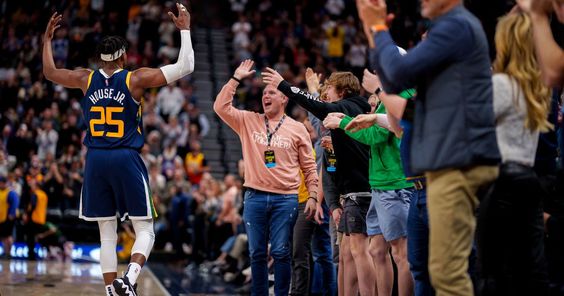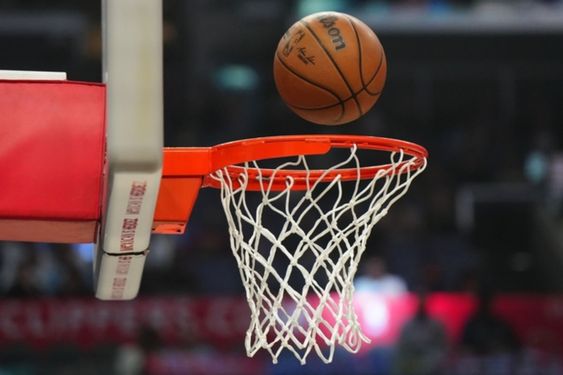What is Drop Coverage in Basketball?
Drop coverage is a defensive strategy in basketball used to counter a ball screen (pick and roll) by the offense. Here’s the breakdown:
- Focus on Screener’s Defender: The defender guarding the player who sets the screen (screener) is key.
- Drop Back: Instead of following the screener tightly, this defender “drops” several feet backward towards the paint.
- Protect the Rim & Mid-Range: Their goal is to:
- Prevent layups and dunks at the rim.
- Limit the ball handler’s ability to drive past them.
- Force the ball handler to take a contested mid-range jump shot, which is generally less efficient than shots closer to the basket.
This strategy is often used by teams with strong rim protectors because it allows them to stay near the basket. However, it can leave open jump shots for good shooters if not executed properly.
Drop coverage is a defensive tactic primarily used in pick-and-roll situations. It involves the defender guarding the screener and stepping back towards the basket, effectively forming a “wall” to prevent the ball handler from driving to the hoop. This technique aims to protect the paint and force the offensive player into taking contested mid-range jump shots or making difficult passes. Also, read about What does ISO mean in basketball
History of Drop Coverage
The concept of drop coverage traces back to the early days of basketball, but it gained widespread recognition with the rise of analytics in the sport. Coaches and analysts began to realize the effectiveness of this strategy in limiting high-percentage shots near the rim while still contesting perimeter shots.
Key Concepts
To understand drop coverage fully, one must grasp the fundamental principles of defensive basketball. It involves positioning, communication, and timing to disrupt the opposing team’s offensive flow while minimizing defensive breakdowns.
How to Drop Coverage Works
In practical terms, drop coverage requires the defender guarding the screener to “drop” back toward the basket, creating a barrier between the ball handler and the rim. Meanwhile, the on-ball defender fights over or under the screen to stay attached to their assignment, forcing the ball handler away from the basket or into a contested shot. Discover more about What BEEF stands for in Basketball
Advantages of Drop Coverage
Drop coverage offers several advantages to the defending team. It protects the paint, discourages dribble penetration, and forces opponents to settle for lower-percentage shots. Additionally, it can neutralize dominant pick-and-roll players by limiting their driving lanes.

Disadvantages of Drop Coverage
However, drop coverage is not without its drawbacks. It can leave shooters open on the perimeter if defenders fail to rotate quickly, leading to open three-point attempts. Moreover, skilled ball handlers may exploit the space between the defender and the screener with pull-up jump shots or floaters.
Famous Implementations
Numerous NBA teams have successfully implemented drop coverage as part of their defensive schemes. Teams like the Utah Jazz, Milwaukee Bucks, and Miami Heat have utilized it to stifle opposing offenses and achieve defensive excellence.
Coaching Strategies
Coaches play a pivotal role in implementing drop coverage effectively. It requires clear communication, disciplined rotations, and an understanding of opponents’ tendencies to maximize its effectiveness.
Player Roles in Drop Coverage
For players, executing drop coverage entails specific roles and responsibilities. Big men must protect the rim while guards navigate screens and contest shots. Communication between defenders is essential to ensure seamless coordination on the court.
Common Mistakes to Avoid
Despite its effectiveness, drop coverage is susceptible to errors if not executed correctly. Common mistakes include poor communication, slow rotations, and improper positioning, all of which can lead to easy scoring opportunities for the offense.
Adjustments and Adaptations
Successful coaches are adept at making adjustments and adaptations based on the flow of the game. They may switch defensive schemes, alter matchups, or employ different strategies to keep opponents off-balance and maintain defensive integrity.
Impact on Offensive Strategies
Offenses have also evolved to counter drop coverage. Teams may employ tactics such as spacing the floor, setting off-ball screens, or running pick-and-pop plays to exploit gaps in the defense and create scoring opportunities.

Practical Applications
For coaches and players at all levels, understanding drop coverage is essential for defensive success. By mastering the fundamentals and implementing sound strategies, teams can improve their defensive prowess and elevate their performance on the court.
Conclusion
In conclusion, drop coverage is a valuable defensive strategy that has revolutionized the game of basketball. Its ability to protect the paint, deter dribble penetration, and force contested shots makes it a formidable weapon in any team’s arsenal.
FAQs
- Is drop coverage effective against all types of offenses?While drop coverage can be effective against many offenses, it may struggle against teams with exceptional three-point shooters or dynamic ball handlers.
- How can teams improve their execution of drop coverage?Teams can improve their execution through practice, communication drills, and film study to identify areas for improvement.
- Are there any alternatives to drop coverage?Yes, teams can employ various defensive strategies such as switching, hedging, or blitzing to counter different offensive schemes.
- Can drop coverage be used in youth basketball leagues?Yes, drop coverage can be adapted for use in youth leagues, but coaches must simplify the concepts and focus on fundamental skills.
- What role do analytics play in the implementation of drop coverage?Analytics can help coaches identify opponents’ tendencies, evaluate the effectiveness of defensive strategies, and make informed decisions on adjustments.
Alina is a passionate basketball player with a love for the game that knows no bounds. With years of experience on the court, she brings unmatched skill and dedication to her team. Alina’s commitment to excellence both on and off the court sets her apart as a leader and motivator. Whether she’s driving to the basket or encouraging her teammates, Alina’s enthusiasm and sportsmanship shine through. As a valuable member of the basketball team, Alina’s presence elevates the spirit and performance of the entire squad.







